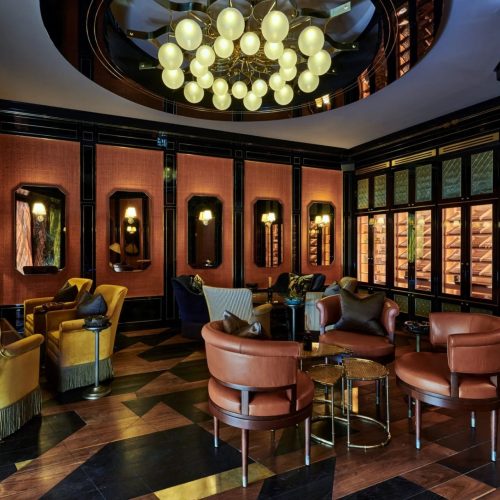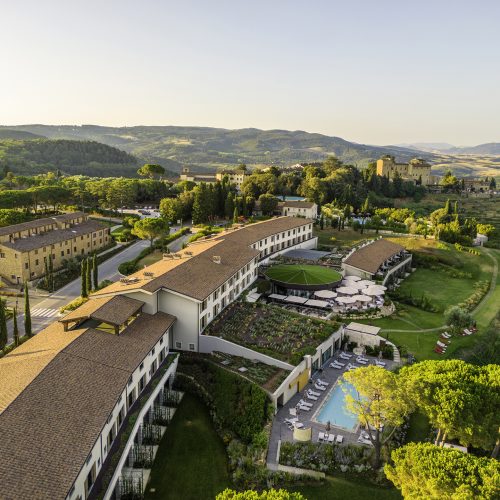

The Most Exciting New Restaurants and Bars to Visit in Paris
Ahead of the Summer Olympics, discover six standout spots that blend the best of the city’s ever-fashionable design with dishes worth traveling for
Hosting the Summer Olympics is reason enough to spur a culinary renaissance—even in a city considered to be a gastronomic capital. The crop of restaurants debuting in Paris ahead of the Games is a mix of long-awaited arrivals, new ventures from the who’s who of French gastronomy, and solo projects from promising newcomers. To help shorten the ever-growing list of must-book restaurants and bars in Paris, Galerie rounded up six standout spots that blend the best of the city’s ever-fashionable design with dishes worth traveling for.

Public House. Photo: Jérôme Galland

Chicken pie. Photo: Benoît Linéro
1. Public House
British food in Paris has largely been limited to fish and chips-style pub fare and brasseries serving standards like shepherd’s pie and Sunday roasts. Public House, dare we say, is making English cuisine cool thanks to the “Pie King,” award-winning British chef Calum Franklin, who’s behind The Pie Room at Holborn Dining Room at Rosewood London. Here, in the landmark-heavy Opera district, French ingredients are woven into dishes like the dauphinoise potato and aged cheddar pie and Guinness-braised beef pie. Known for his delicate, detailed lattice crusts, chef Franklin has transported some of his gastronomic spins on other classics, including the boudin noir-stuffed scotch egg and sticky toffee pudding.
Across three floors of a Haussmann building, designer Laura Gonzalez beautifully matched the photogenic plates, melding elements from traditional Parisian brasseries (terracotta tiles, Maison Gatti rattan chairs) with British touches such as studded tartan bar stools, checked fabric-and-leather booths, pub tables, and a dart board in the second-level Gaming Room.
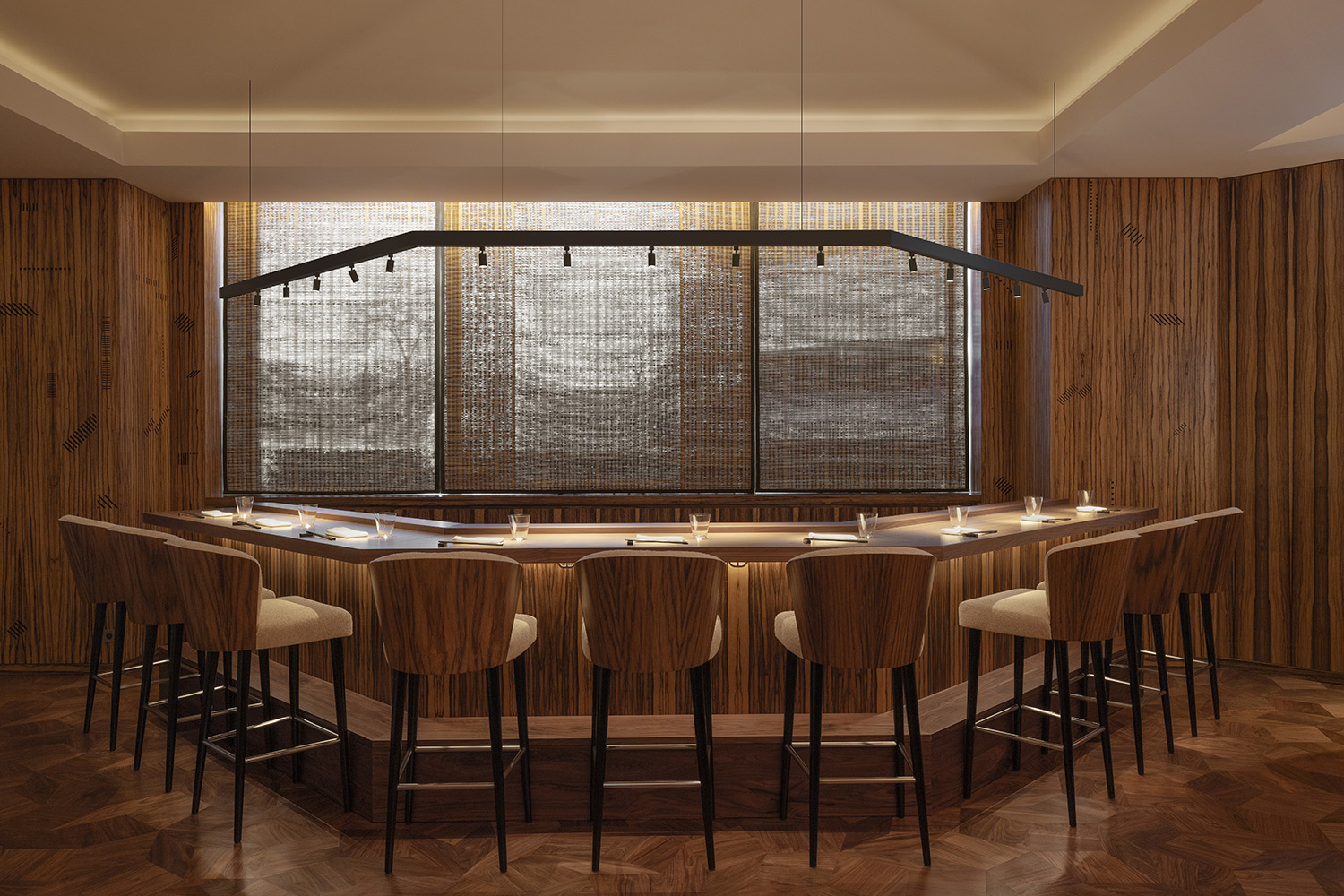
Hakuba. Photo: Vincent Leroux

Dish served at Hakuba. Photo: Caroline Dutrey
2. Hakuba
Since its opening three years ago, Cheval Blanc Paris has managed to produce one success story after the next with its restaurants—and the latest blends the talent of head chef Arnaud Donckele (of the hotel’s three Michelin-starred Plénitude) with Japan-born Takuya Watanabe, behind JIN, the city’s first Michelin-starred omakase. The result is a culinary and visual immersion into Japanese art and craftsmanship.
Hakuba, which means “white horse” in Japanese, is tucked away on the edge of the lobby, a stone tsukubai stone wash basin flowing like a fountain subtly marks the entrance. Swathing the space in black walnut wood, New York–based architect Peter Marino intended to create the tranquil feeling of a Japanese forest. Two counters flank either side, and chefs put on a theatrical show with each course—served on artisan-crafted plates from Kyoto and Fukuoka, and paired with sake and wine served in Japanese glassware—showing the strength, precision, and finesse of the two starred chefs.
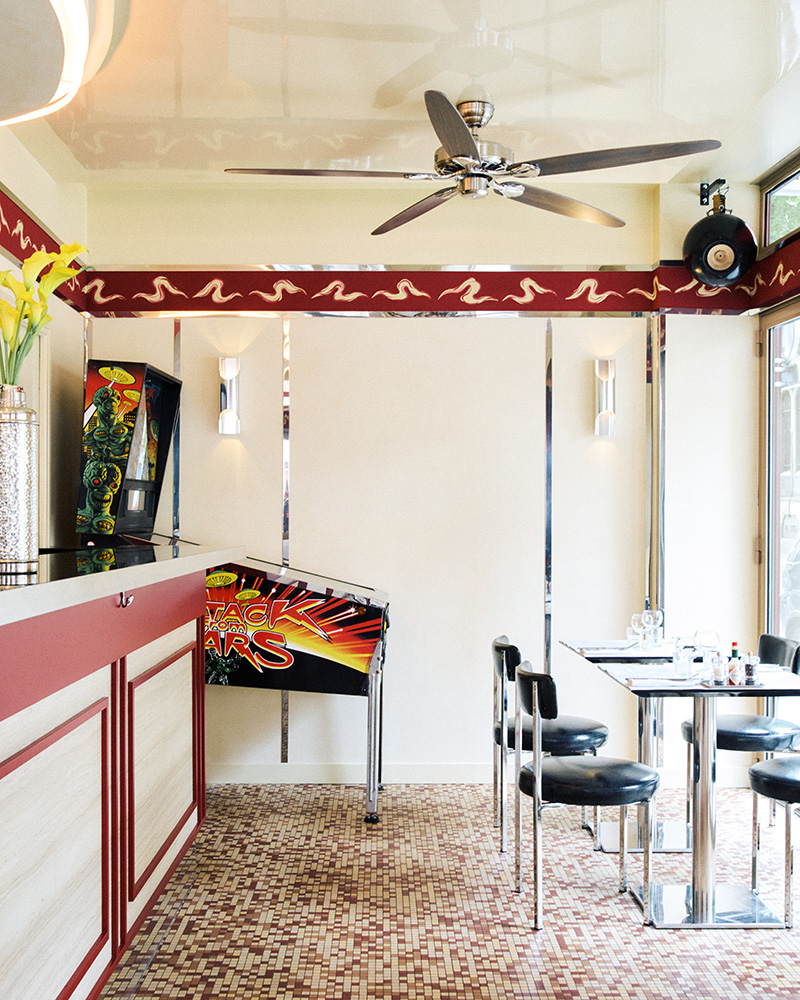
Le Cornichon. Photo: Matteo Verzini

Dish served at Le Cornichon. Photo: Félix Dol Maillot
3. Le Cornichon
The hip 11th arrondissement is known for cheeky takes on everyday French fixtures. (Take Delicatessen Place, which is not a deli at all—it’s a natural wine bar.) Paul Henri and Bertrand Chauveau—who cut his teeth in Michelin-starred kitchens such as Jean-François Piège’s Le Grand Restaurant and David Toutain)—went a step further with neighborhood joint Le Cornichon.
At the revamped PMU (a bar-tabac where you can buy cigarettes, lotto tickets, and cheap glasses of wine or coffee), gaming is still part of the concept—you’ll find a pinball machine and scratch-off lotto tickets for purchase. The design scheme, however, leans more on the side of a retro diner with 1970s mosaic floors, green velvet banquettes, chrome chairs, and mirror-topped tables. A sense of nostalgia is an intentional part of the design ethos (the work of Paris-based interior design studio Claves Architecture) as well as the cuisine, which shifts from simple bar fare including hard-boiled eggs, terrine, and dry-cured sausage and chorizo to generous portions of beef fat fries.
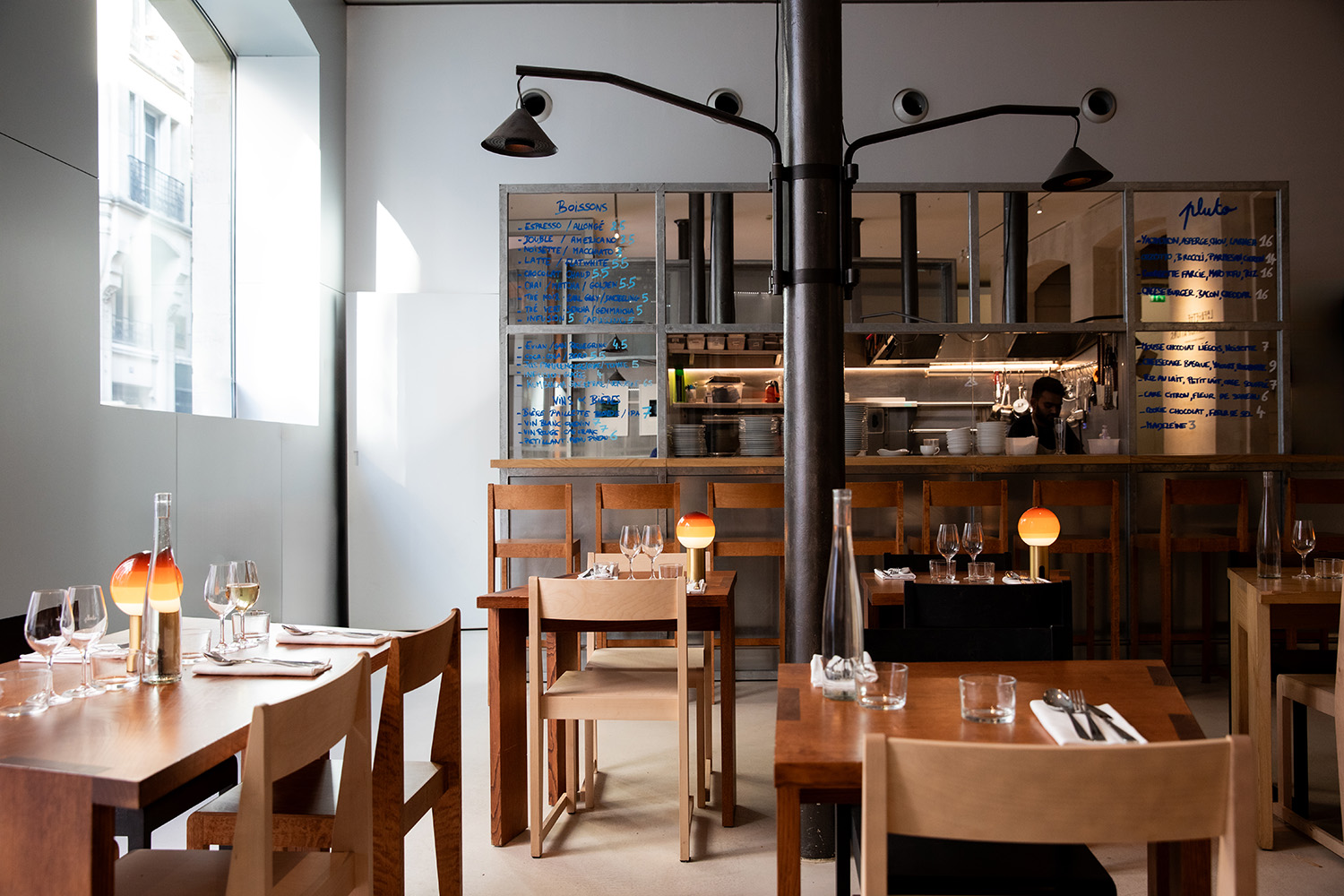
Pluto. Photo: Clelia Stevenard
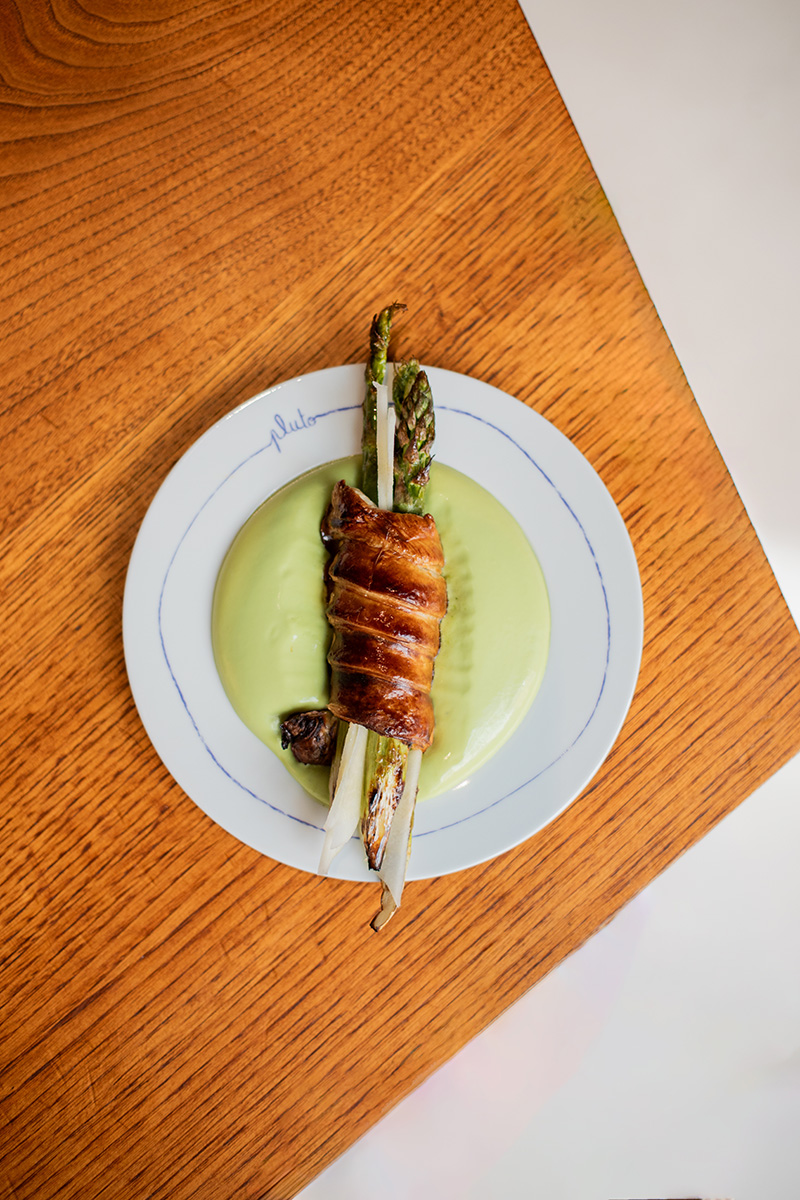
Dish served at Pluto. Photo: Clelia Stevenard
4. Pluto
Housed inside the Lafayette Anticipations exhibition space, café-restaurant Pluto, in the heart of gallery-heavy Le Marais, takes a cue from Scandinavia’s minimalist, pared-back bistros, allowing seasonally-driven cuisine to be the star of the show. A project between friends—Pierre-Louis Hirel, Adrien Ducousso, and chef Thomas Coupeau (previously of Carbón, also in the Marais, and creative culinary studio We Are Ona)—the trio enlisted Hugo Haas Studio to help reimagine part of the foundation’s Rem Koolhaas–designed space.
Spilling onto the interior courtyard’s terrace and patio, the eatery is industrial-chic in style, with geometric wooden furniture by Danish design brand Frama, mood lamps by Marset, and counter seats facing the glass-encased open kitchen. Self-taught chef Coupeau’s weekly changing menu pays homage to the scents and recipes of his childhood with recipes inspired by his restaurateur parents and Vietnamese grandparents. Expect playful, dressed-up dishes with unexpected twists, like gamjajeon (Korean potato pancakes) with tarama, crispy chili, and parmesan and cacio e pepe–style macaroni and cheese.
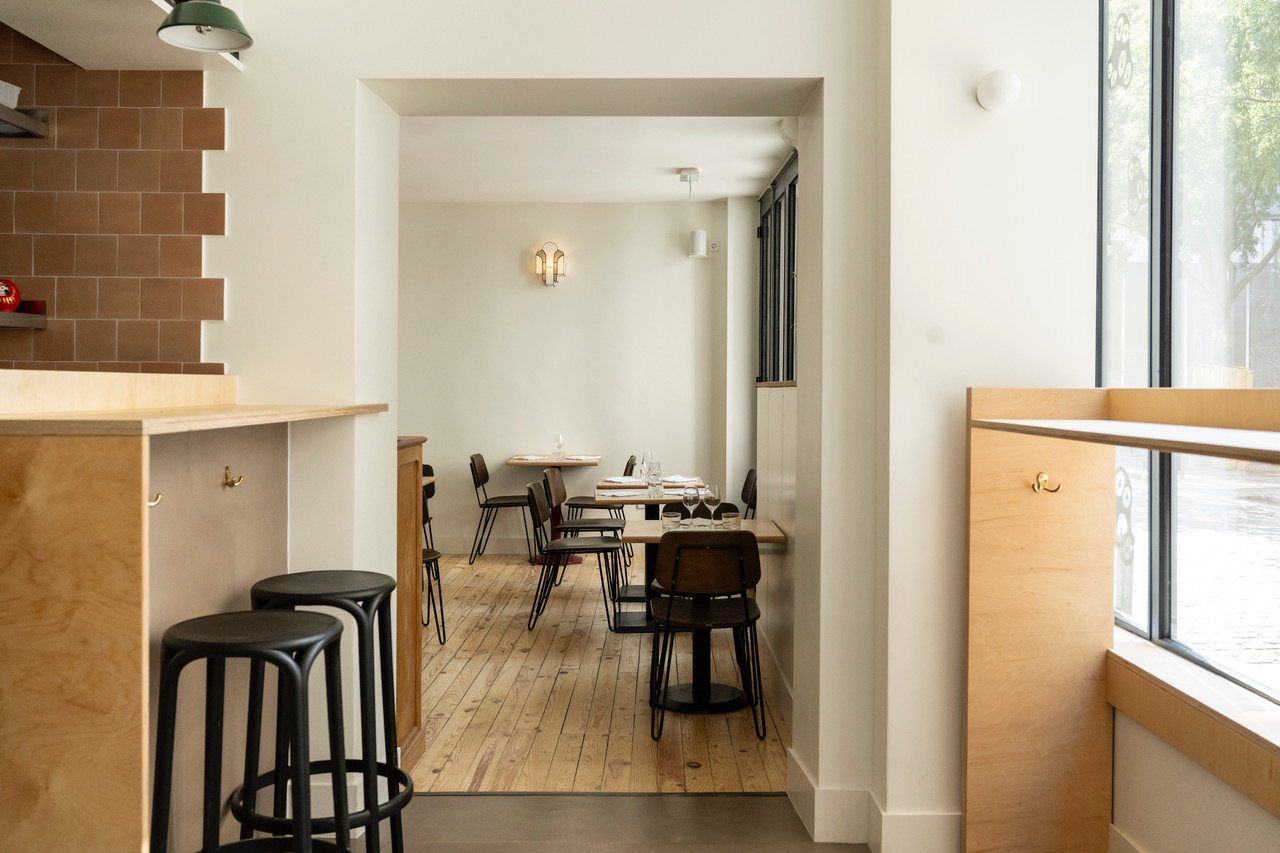
Interior of Oobatz in Paris. Photo: Evan Sung
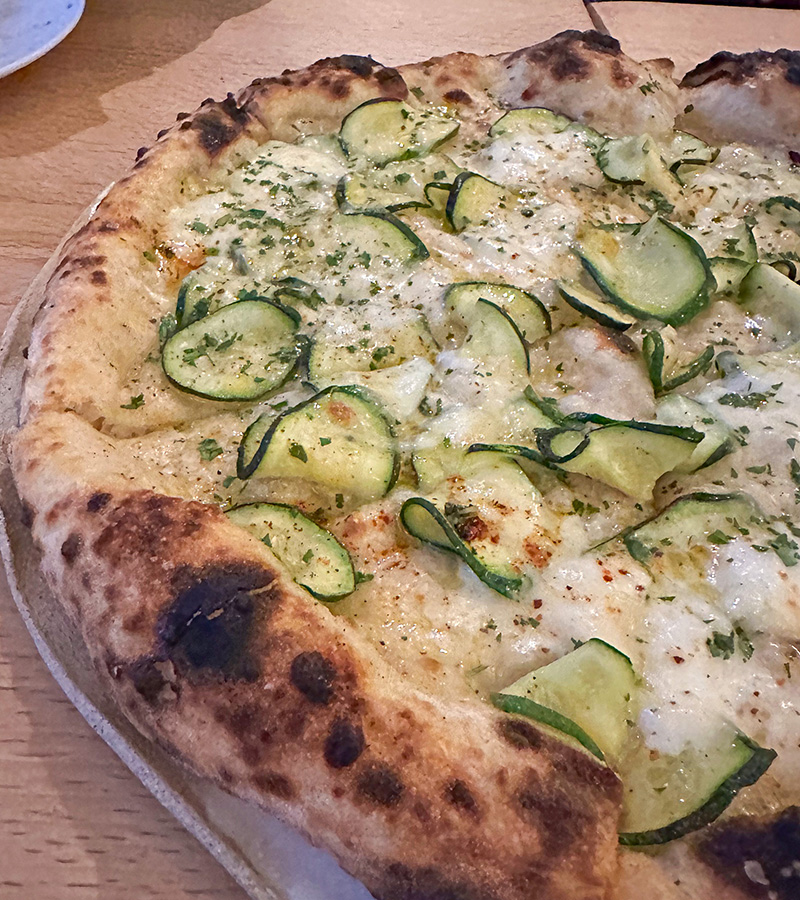
Zucchini pizza at Oobatz. Photo: Courtesy Paris Monthly
5. Oobatz
The Big Mamma group popularized pizza in Paris nearly a decade ago with the debut of their first design-driven trattoria, East Mamma. A slew of sleek pizzerias has emerged since, but one that’s driving diners to a Ménilmontant, a less-frequented corner of the 11th arrondissement, is Dan Pearson’s Oobatz (Italian-American slang for “crazy”). In winter 2022, the former Ten Belles sourdough baker converted the hallway-sized, Michelin-starred Le Rigmarole into Pizzamarole. After a wildly successful test run, the pop-up—a partnership with Le Rigmarole founders Jessica Yang and Robert Compagnon—now has a permanent home in an airy, Scandinavian-style space outfitted with light wood tables, street-facing counter seats, and terracotta-colored tiles lining the open kitchen.
Pizzamarole regulars will be pleased to know the menu hasn’t changed much. No starters, just six different Roman-style pies, the last of which is “carte blanche,” the chef’s choice. Think zucchini and mozzarella di bufala or asparagus with citrus, paired with natural wines by bottle or on tap. Be sure to save space for the pizzookie, a warm chocolate chip cookie topped with homemade Ugandan vanilla ice cream from Folderol, Le Rigmarole’s ice cream and natural wine parlor.
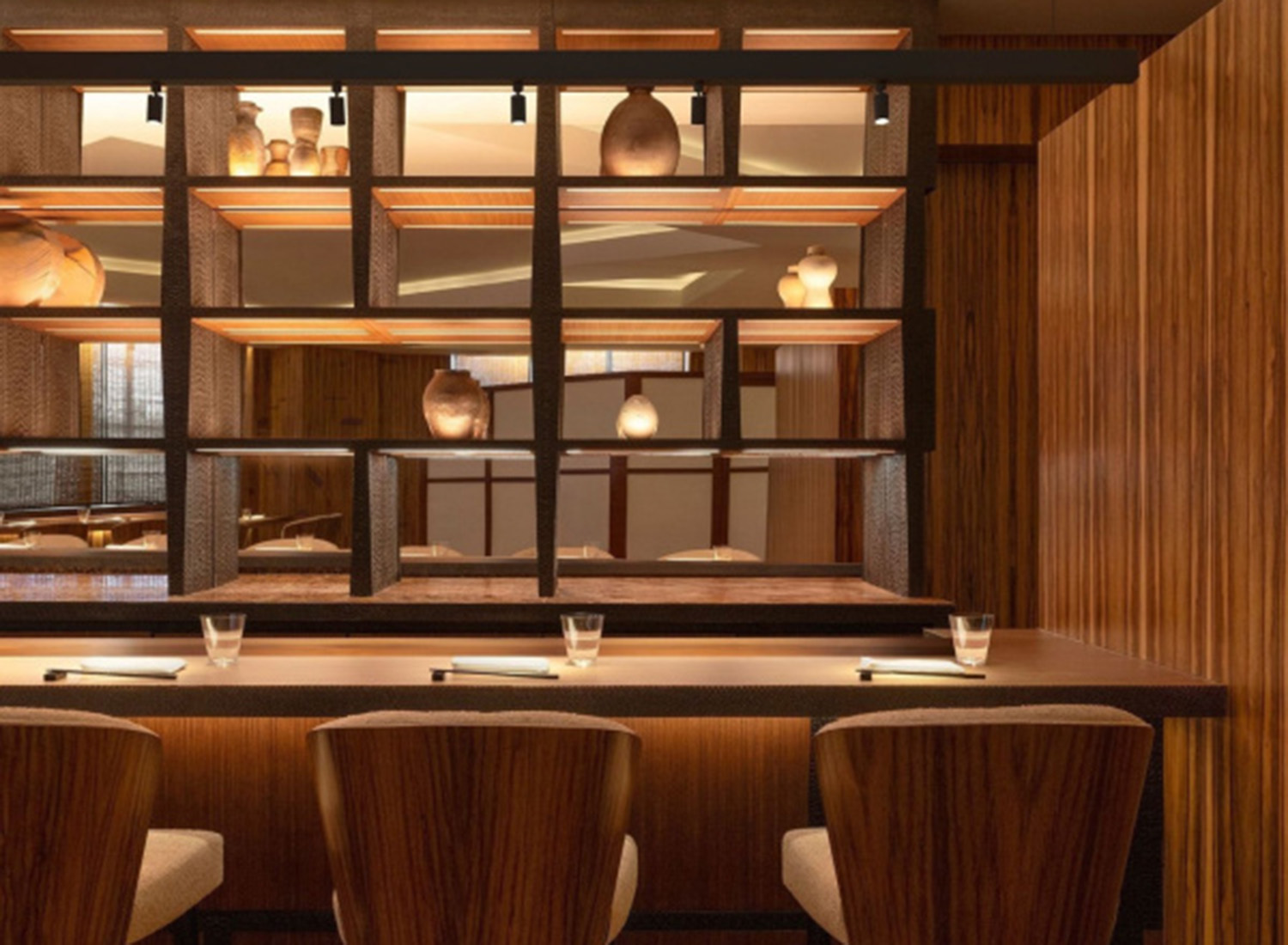
19 Saint Roch. Photo: Courtesy Newtable
6. 19 Saint Roch
Vivant 2’s former chef (and co-founder of neighboring sister wine bar Déviant), Pierre Touitou’s first solo venture takes its name from its address, 19 Saint Roch, in the central First Arrondissement, near Palais Royal. The chef, whose resume includes fine-dining stints with Pierre Gagnaire and Alain Ducasse, as well as time at natural wine hotspot Aux Deux Amis, designed his new 40-seater, izakaya-inspired restaurant himself, with a stainless steel counter facing the open kitchen, monochrome tiled floors, warm wood- and mirror-clad walls, and chrome-and-leather chairs. Similar to his past projects, the wine list is on the natural side, yet the cuisine is a mélange of French and Mediterranean with Japanese touches nodding to his travels—and the space’s previous life as a Japanese restaurant.



